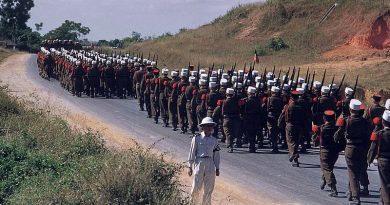The Spanish Forts of Havana
More than any other period of its history, the 400 years of Spanish colonisation in Cuba left a lasting legacy on the country’s architecture.
Between the 16th and 18th centuries, the Spanish built a series of forts to repel raiding French corsairs, rampaging buccaneers and English privateers including Sir Francis Drake, from raiding the sheltering Spanish treasure fleets. They also served to keep the English from taking the island for themselves (as they tended to do in those days).

Morro Castle before the British attack, 30 July 1762 by Dominic Serres
Five hundred years on, four of these muscular fortresses still dominate Havana’s harbour and have come to symbolise the city.
One of the oldest forts in the New World, Castel de la Real Fuerza is an imposing 16th-century fortress that once housed the Spanish governors in the early days of empire.

The Castillo de la Real Fuerza is one of Latin America’s most beautiful castles and has been a UNESCO World Heritage Site since 1982. Construction of the castle started in 1555 and by 1577 it was completed making the Real Fuerza castle the oldest Spanish stone fortress in Latin America.
Translated as “Castle of the Royal Force” it was primarily constructed to defend against pirate attacks but soon became the official residence of the Governor of Havana. The historic monument is most famous for its watchtower (that was added in 1634 and is now a symbol of Havana city), that is adorned with a bronze statuette in the shape of a woman (a replica of La Giraldilla of the Seville Cathedral, in Spain) used as a weather vane. Today, it is home to a maritime museum fascinating exhibits of Cuba’s maritime past with shipwrecks and treasures that charts Cuba and Spain’s naval history in Havana.

La Fuerza Fortress University of Houston Library
Read more here: http://www.havanatimes.org
Main image courtesy of http://whitepostcards.com/




